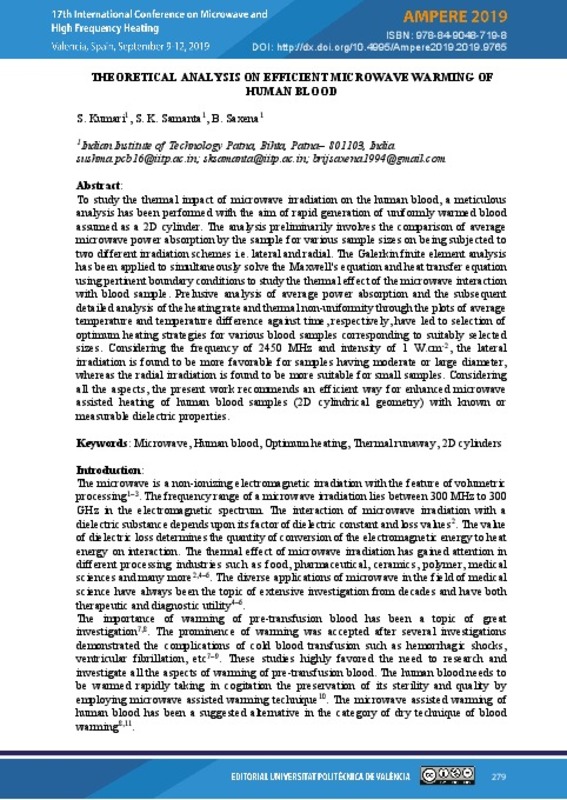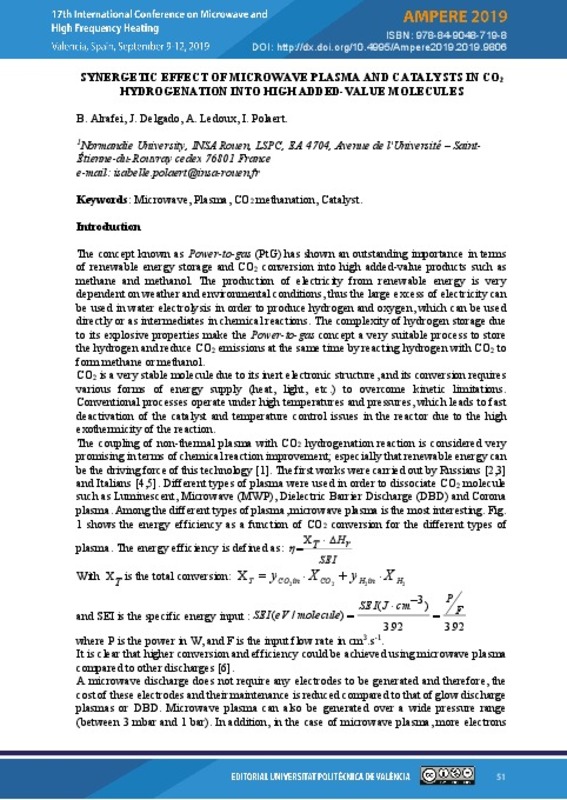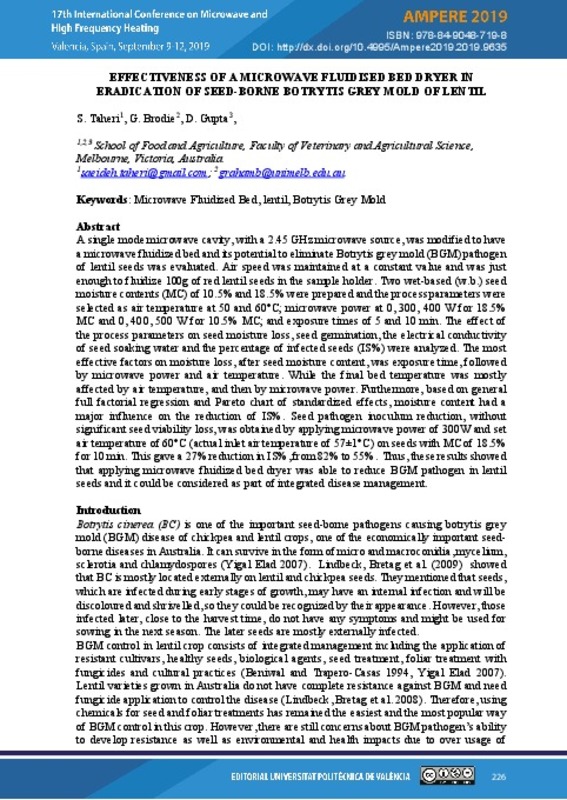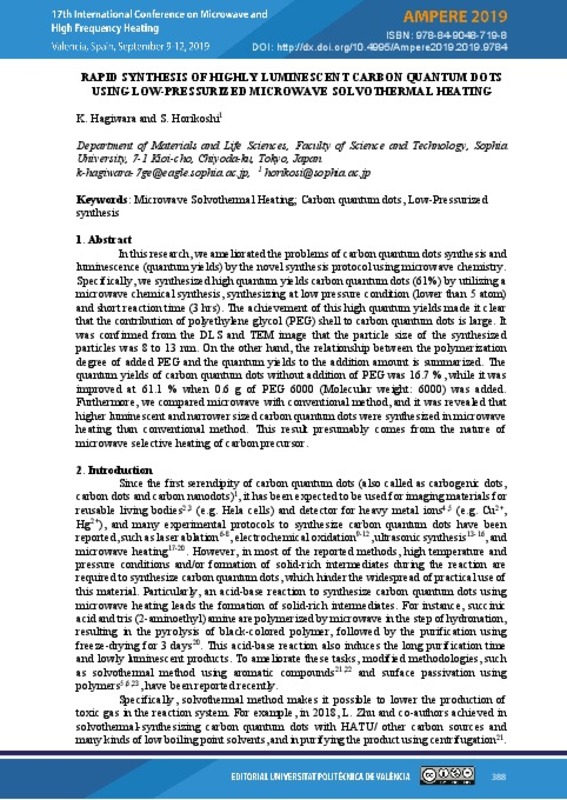JavaScript is disabled for your browser. Some features of this site may not work without it.
Buscar en RiuNet
Listar
Mi cuenta
Estadísticas
Ayuda RiuNet
Admin. UPV
Theoretical analysis on efficient microwave warming of human blood
Mostrar el registro sencillo del ítem
Ficheros en el ítem
| dc.contributor.author | Kumari, Sushma
|
es_ES |
| dc.contributor.author | Samanta, Sujoy
|
es_ES |
| dc.contributor.author | Saxena, Brij
|
es_ES |
| dc.date.accessioned | 2019-11-05T07:26:02Z | |
| dc.date.available | 2019-11-05T07:26:02Z | |
| dc.date.issued | 2019-10-15 | |
| dc.identifier.isbn | 9788490487198 | |
| dc.identifier.uri | http://hdl.handle.net/10251/130216 | |
| dc.description.abstract | [EN] To study the thermal impact of microwave irradiation on the human blood, a meticulous analysis has been performed with the aim of rapid generation of uniformly warmed blood assumed as a 2D cylinder. The analysis preliminarily involves the comparison of average microwave power absorption by the sample for various sample sizes on being subjected to two different irradiation schemes i.e. lateral and radial. The Galerkin finite element analysis has been applied to simultaneously solve the Maxwell's equation and heat transfer equation using pertinent boundary conditions to study the thermal effect of the microwave interaction with blood sample. Prelusive analysis of average power absorption and the subsequent detailed analysis of the heating rate and thermal non-uniformity through the plots of average temperature and temperature difference against time, respectively, have led to selection of optimum heating strategies for various blood samples corresponding to suitably selected sizes. Considering the frequency of 2450 MHz and intensity of 1 W.cm-2, the lateral irradiation is found to be more favorable for samples having moderate or large diameter, whereas the radial irradiation is found to be more suitable for small samples. Considering all the aspects, the present work recommends an efficient way for enhanced microwave assisted heating of human blood samples (2D cylindrical geometry) with known or measurable dielectric properties. | es_ES |
| dc.format.extent | 7 | es_ES |
| dc.language | Inglés | es_ES |
| dc.publisher | Editorial Universitat Politècnica de València | es_ES |
| dc.relation.ispartof | AMPERE 2019. 17th International Conference on Microwave and High Frequency Heating | es_ES |
| dc.rights | Reconocimiento - No comercial - Sin obra derivada (by-nc-nd) | es_ES |
| dc.subject | Energy Production by Microwaves | es_ES |
| dc.subject | Microwave CVD | es_ES |
| dc.subject | EM Modelling | es_ES |
| dc.subject | Microwave Material interaction | es_ES |
| dc.subject | Dielectric Properties | es_ES |
| dc.subject | Dielectric Properties Measurement | es_ES |
| dc.subject | Solid State Microwave | es_ES |
| dc.subject | Microwave Processing | es_ES |
| dc.subject | Microwave Chemistry | es_ES |
| dc.subject | Microwave applicators design | es_ES |
| dc.subject | Microwave | es_ES |
| dc.subject | Human blood | es_ES |
| dc.subject | Optimum heating | es_ES |
| dc.subject | Thermal runaway | es_ES |
| dc.subject | 2D cylinders | es_ES |
| dc.title | Theoretical analysis on efficient microwave warming of human blood | es_ES |
| dc.type | Capítulo de libro | es_ES |
| dc.type | Comunicación en congreso | es_ES |
| dc.identifier.doi | 10.4995/AMPERE2019.2019.9765 | |
| dc.rights.accessRights | Abierto | es_ES |
| dc.description.bibliographicCitation | Kumari, S.; Samanta, S.; Saxena, B. (2019). Theoretical analysis on efficient microwave warming of human blood. En AMPERE 2019. 17th International Conference on Microwave and High Frequency Heating. Editorial Universitat Politècnica de València. 279-285. https://doi.org/10.4995/AMPERE2019.2019.9765 | es_ES |
| dc.description.accrualMethod | OCS | es_ES |
| dc.relation.conferencename | Ampere 2019 | es_ES |
| dc.relation.conferencedate | Septiembre 09-12, 2019 | es_ES |
| dc.relation.conferenceplace | Valencia, Spain | es_ES |
| dc.relation.publisherversion | http://ocs.editorial.upv.es/index.php/AMPERE2019/AMPERE2019/paper/view/9765 | es_ES |
| dc.description.upvformatpinicio | 279 | es_ES |
| dc.description.upvformatpfin | 285 | es_ES |
| dc.type.version | info:eu-repo/semantics/publishedVersion | es_ES |
| dc.relation.pasarela | OCS\9765 | es_ES |
Este ítem aparece en la(s) siguiente(s) colección(ones)
-
Ampere 2019 [66]











